College, Go West, Our Hospitality (1923, 1925, 1927)
Directed by: Buster Keaton, James W. Horne, John G. Blystone
Written by: Bryan Foy, Buster Keaton, Carl Harbaugh, Jean C. Havez, Lex Neal
Starring: Anne Cornwall, Buster Keaton, Clyde Bruckman, Howard Truesdale, Natalie Talmidige
BUSTER KEATON: OUR HOSPITALITY/ GO WEST/ COLLEGE [Limited Edition Three Film Box Set]: On Blu-ray NOW, from EUREKA ENTERTAINMENT
The McKays and the Canfield families have been engaged in an on going feud for ages. When two men both kill each other in a shootout, it’s probably nothing new. The widow of one of them, John McKay, takes her baby boy Willie to her sister’s house in New York hoping he will never know of this feud with the Canfields. Twenty years later though, Willie receives a letter saying he’s inherited his father’s estate and must take possession of it. On the train there he falls for fellow passenger Virginia – not knowing that’s she a Canfield….
Eureka bring us three more films from Buster Keaton, none of which I’d seen before, beginning with this 1923 effort and his second full length feature after Three Of Ages, which was shot as three distinct parts just in case the film didn’t work and they could release the sections as shorts. Our Hospitality is regarded as the one where Keaton first toned down the slapstick and focused more on telling a story, with most of the gags rooted in reality and coming out of the plot rather than there being constant clowning. Co-directed by Jack Blystone and inspired by the real-life Hatfield–McCoy feud which claimed the lives of several family members, it might one of his most satisfying features out of the ones I’ve seen, alternating drama, romance and comedy in a very well balanced and well paced 70 mins. The opening has a surprisingly dark mood as a father [also played by Keaton] returns home to his wife and son at night while a thunderstorm rages. Three men come round to kill him, and when he opens the door and steps outside for a shootout, both he and somebody else fall to the ground dead, an event only partly seen because in between the flashes of lighting it’s all black in a very stylistically shot scene for the time. The two surviving Canfields swear vengeance on the man’s sole offspring. Twenty years later and Willie is a young man living in New York, trying to ride, but actually having to run for some of the time, a peddle-less bike to work in the first piece of comedy, one soon followed up by a lengthy sequence involving a [true to life] early train which only fits ten as it’s only made up of stagecoach carriages without the horses. Here, we can see Keaton practising for The General, with some gags repeated and elaborated on in that classic, while his dog follows the train all the way.
While all this happening, Willie also falls in love in possibly the cutest of his ‘meet cute’ scenes; he initially tries to stop himself from continually looking at the lady in the same carriage as him by putting on his top hat that hides some of his face. Of course she should be an enemy. The title refers to Willie being in the Canfield home where he’s actually safe from harm because the Canfields live by the law of ‘southern hospitality’ which forbids them to kill inside their house, though by god they want to. There’s a fair bit of comic suspense, an odd-for-the time sudden explosion that brings a tiny flashback up to date, one of Keaton’s occasional appearances in drag, and an often jaw dropping and superbly sustained finale involving a horse, that train again, a hill, a waterfall and the coolest rope swinging rescue I’ve ever seen. You can barely tell when the location switches to a set, and even if you can, it shouldn’t dampen the excitement if you know that it was only Keaton very nearly drowning in the Truckee River that made him complete said scene in the studio. As usual, it’s some of the smaller gags, like the dog that just won’t let Keaton open a door, that hit my funny bone hardest, though there’s also some supposedly comic stuff with Keaton being made to regret trying to help a woman who’s beaten by her husband which leaves a bad taste in the mouth, and the rural depiction of New York, actually already a city in the 1830’s when this film is set, is bizarre. Otherwise though , this is as likeable a movie as you can really get, with Keaton also seeming to have mixed feelings for a past Americana, definitely showing a fascination for old machinery even though he likes to show up its shortcomings, and feeling able to cast his wife Natalie Talmadge as Virginia and his dad as a grouchy train engineer.
Rating: 









Our Hospitality: Presented in 1080p from a 2K restoration
Though sourced from a transfer done by the notorious Cineteca di Bologna back when they always end up with an often sickly yellow emphasis on their restorations, Eureka seem to have done some work on it as it’s in perfect black and white. A preface tells us that it was sourced from three prints, with one forming the basis of the restoration, one being used in a few sections, and one just being employed for one shot. Indeed there are portions where it’s rather softer than the rest of the presentation, and even the best stretches tend to exhibit some grain cluster. But this is a film from 1923; while not the best looking example I’ve seen of this vintage, it’s still darned impressive. The detail is very fine and there are only a few examples of obvious print damage. Eureka have used the music score form the 1984 version by Carl Davis; as usual it matches both the tone and the action of the film very well.
Audio Commentary by silent film historian Rob Farr
Eureka were seemingly unable to port over any of the special features from the Kino Lorber Blu-ray, but we do two of three extras from the earlier Kino Video release plus a new audio commentary which replaces the comedy short film The Iron Mule which used the same train. Rob Farr begins his track by saying how happy he is to be talking about what he considers to be “the ultimate Buster Keaton film” before launching into a non-stop parade of facts and appreciation. We learn that Keaton changed the family names just in case their descendants went after him, that Talmadge was pregnant throughout which they tried to hide on film, a lot of words from Keaton himself on his methods, and – always interesting – what current reviews were like. The information overload is sometimes so strong that you may find it hard to keep up, but rather that than lots of pauses and repetition. Very good
“Hospitality” early workprint version of “Our Hospitality” ‘[50 mins, with optional audio commentary by Keaton expert Polly Rose)
This was on the Kino Video, though it didn’t come with a commentary on that. Keaton often previewed his films in ‘rough cut’ versions which he would then tweak with reshoots and re-edits. Watching Hospitality is a fascinating look at Keaton’s creative process. In it, the opening sequence in a flashback that appears ten minutes in, and almost every scene has different editing, while most of the big set peices were later extended, notably the train journey where Keaton not only added gags but elongated the down time in between them and let his scenes with Talmadge play out in longer takes. The print looks awful, but I do like the organ score because it’s probably very much like what originally accompanied the film. The commentary by Polly Rose provides a thorough analysis of the changes and the reasons for and the effect of them, as well telling us of two other true events which inspired the film.
“Making Comedy Beautiful” video essay by Patricia Eliot Tobias ([26 mins]
This video essay goes into detail on the making of the film, points out when trickery or enhancement occurs on screen [it’s more than I thought, though that’s not entirely a bad thing because it shows how well done said trickery and enhancement is], and compares bits in it with similar bits in The General. There’s some probably unavoidable repetition of material already heard in the two commentaries, though it’s possibly best heard before you watch Hospitality. I still enjoyed watching it and it’s a well structured piece.
Stills Gallery
Friendless can’t find a job in his small hometown, so he tries his luck in New York, but is overwhelmed by the big city after just a few minutes. He falls off a train near a ranch, where he tries his luck as a cowboy, and despite being inept at seemingly everything and his only friend being an equally lonely cow named Blue Eyes, he becomes in his own way quite successful. But then the proprietor decides to send a thousand cattle to the slaughterhouses of Los Angeles to avoid going bankrupt, against the will of his neighbour who wants a better price – and one of them is Brown Eyes….
It seems that Go West is a bit of a divisive offering, with many feeling that it lapses into sentimentality, something Keaton tended not to dabble in. Recently I reviewed the Billy Wilder film Five Graves To Cairo [also for Eureka] and made the point that, if sentimentality succeeds in creating strong emotion in the viewer, is it really a problem? Of course it can be cloying, but in any case I see nothing wrong with Keaton going down a route which his contemporary Charlie Chaplin usually felt more at home in, and actually I wonder if he was being parodic more than anything else, right from an early moment where, after having sold nearly all his possessions, and the money he gets from them being just enough to buy him some bread and and a sausage, Keaton’s character ‘Friendless’ sits on a porch to pat a dog; and the dog promptly turns away. Keaton also seems to be parodying westerns and that genre’s popular star of the time William S. Hart, and goes so far as to mock his own ‘stone face’ persona in a wonderful card game sequence where he’s ordered to smile and all he can manage is the Lillian Gish, Broken Blossoms bit of pushing the corners of his mouth up with his fingers before finding another way to resolve the situation. For him, not smiling is a matter of life and death. It’s one of the best scenes in what, to me, is not just another Keaton classic but which was instantly one of my personal favourites of his work; it’s a bit slower than usual but seems very heartfelt. It builds up to a climax were he has to drive a thousand cows through the streets of Los Angeles. Every gag that one can possibly think of is used [my favourite; the cow licking someone’s shaving cream while he just sits there, oblivious to what’s going on], we verge on Keystone Cops [an unashamed favourite of mine] territory at one point, and it looks like it was horribly difficult to stage, though apparently on the audio commentary we learn that much of it was done through clever editing. Elsewhere are plenty of other fun touches such as some bull POV.
Keaton often played fish out of water characters, but here he really is true outsider, shunned by seemingly everyone and everything; even a horse waits until he’s unsuccessfully tried to mount it before moving. Equally unloved is Blue Eyes the cow, but she protects Friendless against a bull when he’s stuck in quicksand, and then Friendless removes a rock from one of his hooves. Blue Eyes follows him around, and the two eventually form a bond. It’s beautifully done without ever quite becoming totally implausibl; Keaton tended to avoid the latter. Soon Friendless is trying to hide Blue Eyes by covering her with bushes; only for a man riding by on a horse to knock the bushes away – not to mention finding a way to brand her which doesn’t cause pain. Indeed the gags are frequent despite there being little forward momentum for quite a while. As usual Keaton underplays it all; just think how most other comedians will have clowned around in scenes like when Friendless is handed a pail and stool and told to milk a cow. He approaches the cow, places the pail under her udders, sits down a discreet yard away and waits for the cow to do her thing. When nothing happens, he takes the pail and shows it to the cow in case she didn’t notice it was there, puts it back and keeps waiting patiently. Keaton plays it straight, finding comedy in stillness and in not reacting, in not ‘milking’ his gags. And here, he doesn’t even get to romance even if the owner’s daughter warms a little to him. I genuinely think that Go West shows Keaton’s uniqueness better than in some of his more widely acclaimed films and is a major work in its own right. and it ends with perhaps the most perfect of his concluding scenes. I defy anyone to not at least smile.
Rating: 









Go West: Presented in 1080p from a 4K restoration
The majority of Go West looks slightly better than Our Hospitality, with less grain cluster for a start, though there are a few more weak looking shots. This time the print was sourced from four versions, so it’s not surprising. This time the music score is by the Mont Alto Motion Picture Orchestra who I think I’ve come across before; the arrangements seem more appropriate for the time along with some snatches of popular songs, though it’s not quite as well composed as the previous one from Davis.
Audio Commentary by film historians Joel Goss and Bruce Lawton
Eureka add three special features to the Go West short though lose an audio interview that were on the Kino. Joel Goss and Bruce Lawton chat warmly as they offer the expected appreciation and facts; sometimes they get a bit carried away doing the former in praising Keaton, but we have insert shots of Keaton’s hands and stock footage pointed out – the latter of which accounts for some of the lesser quality of some shots – learn that it was so hot for some desert scenes that the emulsion melted and they had to transport the cameras in freezers, and how Keaton trained the cow. A very relaxed discussion but it maintains interest.
“A Window on Keaton” video essay by David Cairns (28:20)
At first glance it seemed to me that the always welcome David Cairns didn’t contribute to this set, but thankfully I was wrong. Here, with a little help from Miranda Gower-Qian, he takes us through these three films [which means that it’s probably best watched after you’ve seen them all, which is what I did when I realised all three were covered] as well as Keaton’s very early career in his parent’s vaudeville act; as a young boy Keaton was bashed about so much by his dad that there was sometimes trouble with the law even though he loved it. Cairns wonders about the pathos in Go West and notices that Keaton always makes it a part of his comedy unlike Chaplin, points out the one time Keaton employed a stunt double in his silent movie career, isn’t quite so hot on College like me, and tells us that Keaton called the shots in that film despite not being credited as director. He concludes that Keaton’s odd sensibility made him less popular than Chaplin and Harold Lloyd at the time, but makes his work seem fresher now.
“Go West: Filming Locations” video essay by John Bengtson [16 mins]
I always enjoy these ‘then and out’ location featurettes, and this has the bonus of having some painted backdrops being pointed out which I didn’t even notice because they’re so good, and shots of some deleted footage where Friendless travels to the snowy North and the Deep South. Some of the material for this film was shot at what became Route 66
“Go West” 1923 comedy short directed by Len Powers, produced by Hal Roach [11 mins]
The Dippy Doo Dads are a group of chimpanzees who play a family, dressing up like humans and are given human-like dialogue in the inter-titles. Here, the son of a family comes home drunk once too often and is banished, whereupon he finds himself in a Western town and gets into more trouble. It’s mildly amusing having the animals say things like, “protect my boy from tainted liquor and painted women”, though it wears a little thin and I can’t see myself watching this again.
Stills gallery
In Southern California, Ronald graduates high school as its “most brilliant scholar”, but at his graduation he gives a speech arguing that books are more important than athletics, causing the object of his affections Mary to reject him. He follows her to Clayton College which its dean describes as an “athlete-infested college” and, hoping to impress Mary, tries out for several athlete teams while at the same time working as a barman and as a waiter in blackface while trying to keep these jobs a secret from Mary – though he’s hugely incompetent at seemingly anything he tries to do….
College can’t help but come across as a disappointment after Our Hospitality and Go West. Clearly inspired by Harold Lloyd’s The Freshman and an obvious commercial exercise after The General did disappointing box office, the college comedy especially suffers from its mid section which is taken up with endless footage of Keaton’s character failing badly at sports practice. Scenes like him attempting the high jump twice, and the bar falling off the first time and him getting himself over but getting stuck head first in the ground, are undoubtedly funny, but there are far too many of them, and these scenes would have been much better off being cut down. Still, this effort does offer considerable pleasure if you lower your expectations a bit, and we learn that the studio was leaning heavily on him. Maybe Keaton doesn’t seem to be trying as hard here, but considering the inventiveness and audacity of much of his previous work, I think we can let him off. As in Go West, he plays another character who’s lonely, though at least Ronald has a mother who seems to think he’s fantastic. Keaton gets a simple but perfectly done gag right at the beginning when he can’t put up an umbrella, and immediately after that it’s quite brave of writers Brian Foy and Carl Harbaugh to show Ronald being an arrogant jerk, slagging off athletes for a considerable time in front of loads of people. Who knows why he decided to sway from side to side towards the end of it, but we’re with him when he decides to win Mary, who to be honest doesn’t seem to be worth all this fuss what with her attitude, but then it was 1927 – hence a rather unfortunate bit with Keaton in ‘black face’; I don’t get offended by this kind of thing, but some might even though the scene is brief and contains a brilliant bit when Keaton does a backwards roll while never spilling any soup from the bowl he’s carrying.
There’s less of a plot in this one, and the boat race climax, while it certainly has some very good moments, is a letdown compared with the usual incredible Keaton finale, though it’s followed by an exciting coda of Ronald rushing to the rescue of his lady friend and putting what he’s learnt when one already unpleasant character turns even nastier, a sequence which has much of the old spark and which you just want to run for much longer. Snitz Edwards from Seven Chances and Battling Butler has some good moments as the dean, one of them being he’s in his office alone and looks at a small picture of a woman on his desk before crying; it has nothing to do with the plot but is just a nice, human touch in a film that has several pleasing similar bits and pieces which certainly make up for the less than great [though not at all bad or even average; this is a silent Keaton picture after all] nature of the piece overall. A few, nice, clever shots too, like when Roland is shouting from a megaphone and we see Mary reflected in the front; it’s not just show-offy, it’s a neat reminder of why Roland is at this point in his life, trying to win a race when everything seems to be conspiring to make him loose. I didn’t take nearly as much away from College as the first two films in this set which really wowed me [even though I should be used to Keaton wowing me by now], but it’s still a pleasant endeavour.
Rating: 









College: Presented in 1080p from a 2K restoration
Five different prints made up the basis for this restoration, though I’d say that in terms of picture quality it’s the best of the three even it you account for it not having any stock footage and very few optical effects. There are certainly fewer scratches, better blacks and stronger image density. The music score by Rodney Sauer, closer in style to Ned Land’s work in Go West than Carl Davis’s in Our Hospitality, provides almost perfect backing.
“Silent Echoes” video essay by John Bengtson [9 mins]
This is a tour of the filming locations around Hollywood; typically interesting even though they didn’t go outside Los Angeles for this one. This is the only special feature that Eureka were seemingly able to port over from the Region ‘A’ Kino Lorber release which also two shorts and two interviews, one by Lillian Gish, and I did miss the lack of a commentary. However, in their place we get:
“The Railrodder” 1965 short produced by the National Film Board of Canada and starring Buster Keaton in one of his final film roles [24 mins, with optional audio commentary with director Gerald Potterton and cameraman David De Volpi].
This utterly charming piece begins with Keaton jumping off London’s Westminster Bridge after reading an advertisement in a newspaper to visit Canada. He subsequently reemerges on the east coast of Canada and sets off to reach the west coast in a rail maintenance vehicle known as a ‘speeder’, only stopping it once in order to obtain camouflage so he can do some duck-shooting in one of many gags which may not always be hilarious but which certainly bring a smile to the face; I especially liked his compartment which seems to be infinite in size on the inside, and his attack by a map. Slight but rather sweet. The audio commentary by director Gerald Potterton and cameraman David De Volpi is full of information on the shoot and even points out some footage that Potterton wishes he’d have reshot. Of course we get plenty about Keaton, including how they’d keep playing cards with him so he’d keep on talking, and how, when asked if a bird poo gag would be good, he replied, “we’ll leave those sort of gags to Peter Sellers”.
“Buster Keaton Rides Again” 1965 documentary feature produced concurrently with, the filming of “The Railrodder” [55 mins, with optional audio recording of a post-screening Q&A with The Railrodder director Gerald Potterton, and David De Volpi)
Nearly twice as long as the film, this documentary goes into Keaton’s career – the very early part was talked about in the Cairns featurette so there’s some inadvertent repetition – the majority of it has a nice ‘fly on the wall’ quality as we see scenes, some of them being ones Keaton wanted to do even though the others thought they were too dangerous, being rehearsed and shot along with some things being thought up on the spot, and Keaton celebrating his 59th birthday and meeting fans. The Q&A tell us quite a lot, such as that his hearing was really poor since World War 1 but how he never liked asking people to repeat things, and he could “still score a direct hit with a custard pie at 27 feet”. Some good questions and answers here.
I may have found the third film a let down after the first two, but it’s still fun and the first two are wonderful. Terrific restorations and incisive special features are the icing on the cake. Highly Recommended.

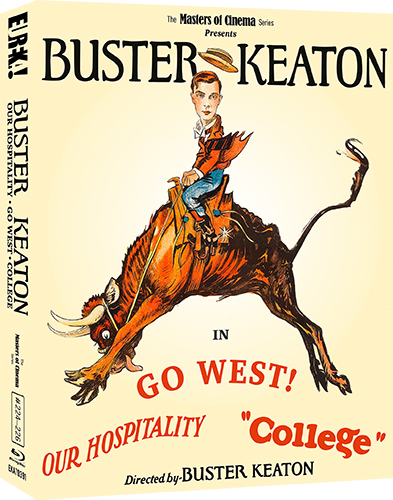

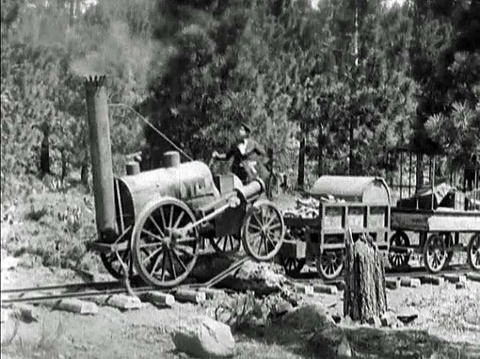
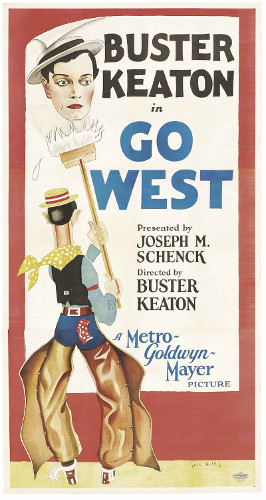
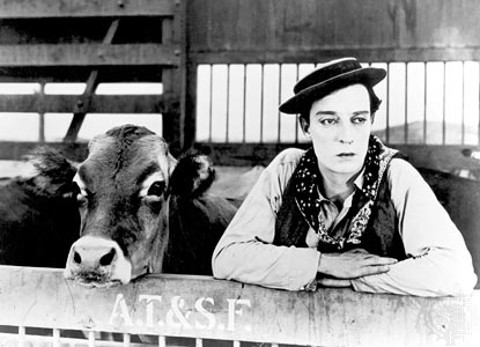



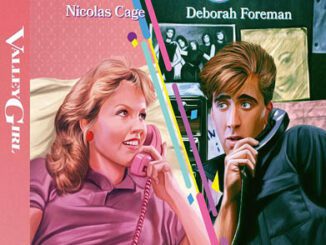
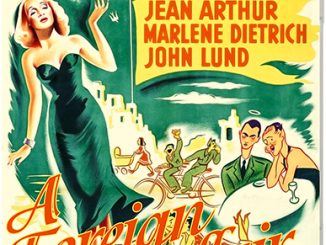
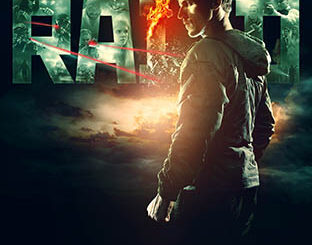
Be the first to comment